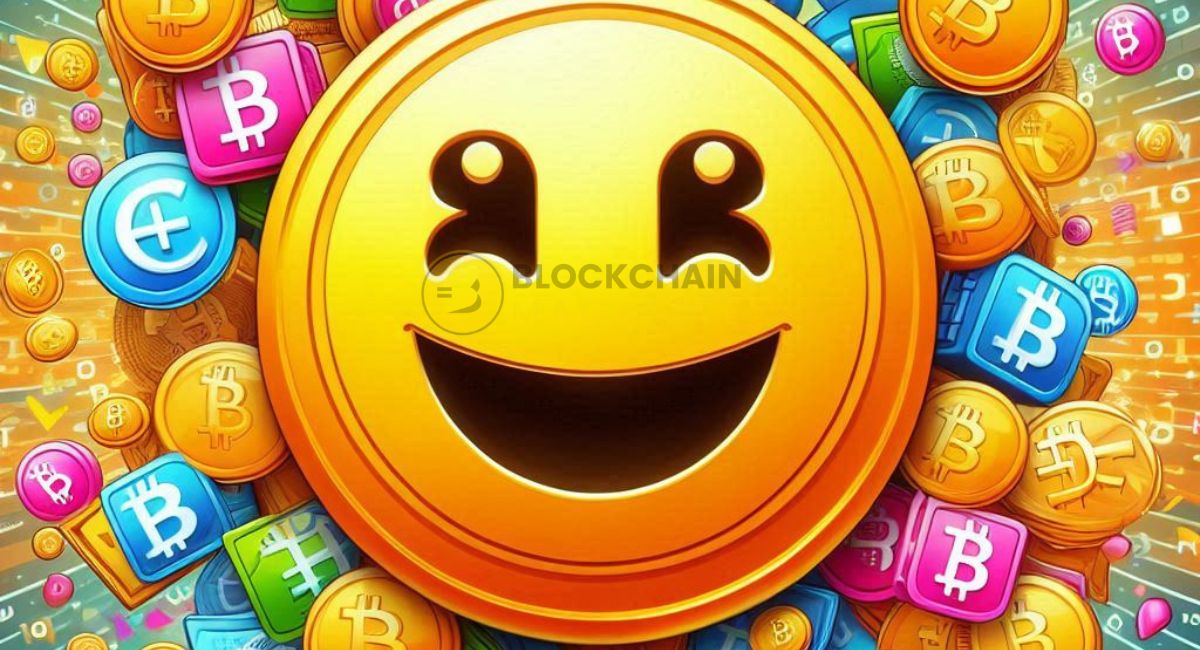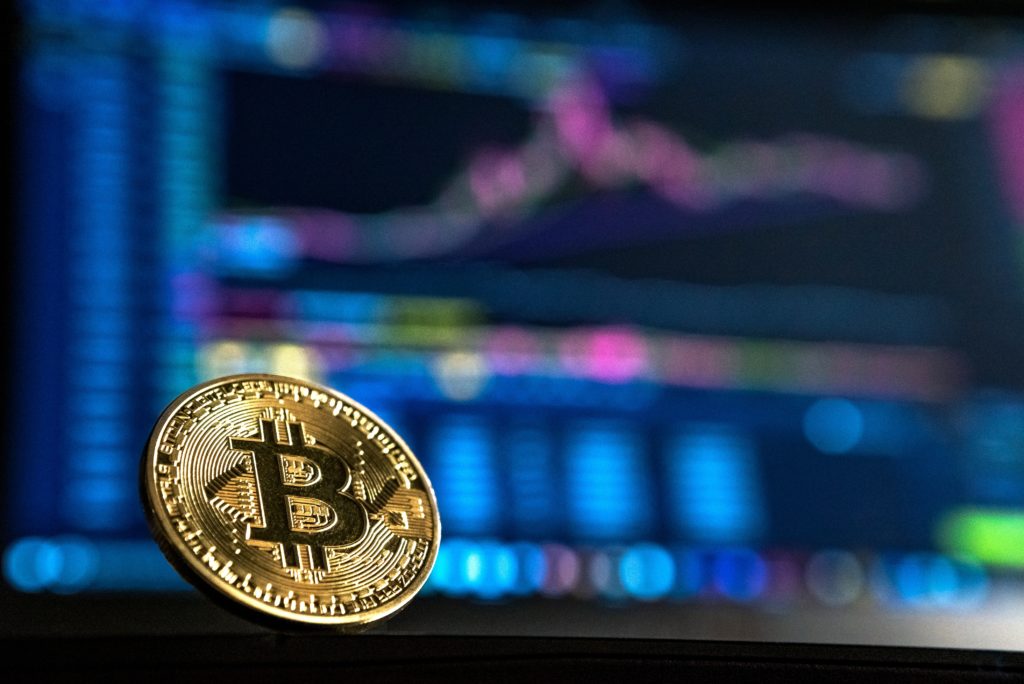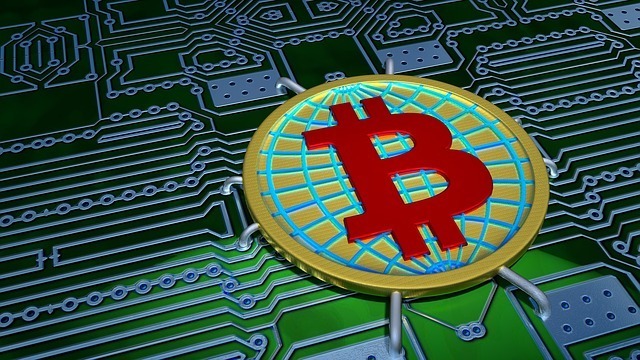Bitcoin Ordinals: Continued Interest in Amazing Bitcoin-Native NFTs In 2025
Bitcoin, the pioneer of cryptocurrency, is best known as a digital store of value and a medium of decentralized transactions. However, in recent years, it has ventured beyond its original purpose into exciting new realms, such as the world of non-fungible tokens (NFTs). The advent of Bitcoin Ordinals has introduced a novel way of creating and trading Bitcoin-native NFTs, unlocking new possibilities for the network.
Ordinals allow users to inscribe data—such as images, text, or videos—directly onto satoshis, the smallest unit of Bitcoin. This innovation has catalyzed significant interest in Bitcoin-native NFTs, despite the blockchain traditionally being considered unsuitable for such use cases. This article explores the concept of Bitcoin Ordinals, their growing popularity, and the broader implications for the Bitcoin ecosystem.
Key Highlights
- Bitcoin Ordinals allow data inscription on individual satoshis, enabling Bitcoin-native NFTs.
- The technology has drawn attention from artists, collectors, and developers, diversifying Bitcoin’s use cases.
- Interest in Bitcoin-native NFTs reflects a growing demand for permanence and decentralization in the NFT space.
- Ordinals spark debate over Bitcoin’s scalability and its role as a multi-use blockchain.
What Are Bitcoin Ordinals?
1. The Ordinal Theory Explained
Ordinals rely on a concept known as Ordinal Theory, which assigns a unique serial number to every satoshi. This numbering allows users to track, trade, and attach metadata to individual satoshis, effectively turning them into unique digital assets.
The core innovation lies in the data inscription process. With the implementation of Bitcoin’s Taproot upgrade in 2021, storing data directly on the blockchain became more efficient. Taproot’s enhanced scripting capabilities make Ordinals possible, enabling users to inscribe satoshis with various types of data, such as images, text, or even small programs.
2. Bitcoin-Native NFTs
Unlike traditional NFTs on Ethereum or Solana, which often rely on off-chain storage for metadata, Bitcoin Ordinals embed the data directly on-chain. This provides unmatched permanence and decentralization, key features that appeal to collectors and advocates of censorship-resistant technology.
Why Bitcoin Ordinals Are Gaining Popularity
1. Decentralization and Permanence
Bitcoin is the most secure and decentralized blockchain, with an unparalleled network effect. The ability to inscribe NFTs directly onto Bitcoin gives collectors confidence that their digital assets will remain immutable and accessible as long as the Bitcoin network exists.
Unlike some NFTs stored on centralized servers or vulnerable to link decay, Bitcoin-native NFTs promise a higher degree of permanence. This aligns with the ethos of decentralization, making Ordinals particularly attractive to purists in the blockchain community.
2. Cultural and Artistic Appeal
Bitcoin Ordinals have drawn attention from artists seeking to immortalize their work on the blockchain. The ability to directly inscribe art onto Bitcoin offers an emotional and cultural value that other platforms may lack.
Projects such as Bitcoin Punks, a Bitcoin-native adaptation of the iconic CryptoPunks, showcase how Ordinals can revitalize interest in digital art on Bitcoin.
3. Limited Supply and Scarcity
Satoshis are finite, and only a small portion can be inscribed due to the nature of Bitcoin’s block size and throughput limitations. This scarcity adds an exclusive allure to Bitcoin Ordinals, making them highly sought after by collectors.
4. Expanding Bitcoin’s Use Cases
Ordinals represent a significant shift in Bitcoin’s narrative. Once seen solely as “digital gold,” Bitcoin is now being explored as a versatile blockchain capable of supporting diverse applications like NFTs. This expanded utility could attract new users and developers, fostering a more vibrant ecosystem.
Challenges Facing Bitcoin Ordinals
1. Scalability and Network Congestion
Bitcoin was not originally designed to handle high transaction volumes or complex data storage. The introduction of Ordinals has raised concerns about network congestion and increased transaction fees. Critics argue that storing large amounts of data on-chain could strain Bitcoin’s limited block space, potentially impacting regular transactions.
2. Philosophical Debates
The emergence of Bitcoin Ordinals has reignited debates within the Bitcoin community about the blockchain’s primary purpose. While some advocate for Bitcoin’s evolution as a multi-use platform, others believe it should remain focused on being a store of value and payment system.
These philosophical differences highlight the tension between innovation and preserving Bitcoin’s original design principles.
3. Environmental Concerns
The increased data inscription and transaction activity driven by Ordinals could lead to higher energy consumption, as Bitcoin mining adapts to greater demand. This has reignited criticism regarding Bitcoin’s environmental impact, particularly as the network becomes more active due to non-financial use cases like NFTs.
Notable Projects and Collections on Bitcoin Ordinals
1. Bitcoin Punks
Bitcoin Punks are a series of pixel art characters inspired by the Ethereum-based CryptoPunks collection. Their launch marked a pivotal moment for Bitcoin Ordinals, demonstrating their potential to host iconic NFT collections on Bitcoin.
2. Ordinal Apes
Similar to Ethereum’s Bored Ape Yacht Club, Ordinal Apes are a high-profile collection inscribed on Bitcoin. Their success highlights the growing appetite for exclusive NFT communities within the Bitcoin ecosystem.
3. Historic Inscriptions
Some collectors have begun inscribing historically significant events or pieces of art onto Bitcoin. These “digital monuments” are seen as a way to immortalize important cultural moments on the blockchain.
Broader Implications for the Bitcoin Ecosystem
1. Attracting New Users and Developers
Bitcoin Ordinals have opened the door for developers and artists who previously focused on platforms like Ethereum or Solana. The ability to inscribe NFTs on Bitcoin could attract a new wave of innovation, expanding the ecosystem’s reach and relevance.
2. Shaping Bitcoin’s Narrative
Ordinals challenge the traditional narrative of Bitcoin as solely a financial tool. By introducing creative and cultural applications, they present Bitcoin as a blockchain capable of diverse functionalities. This could enhance Bitcoin’s appeal to younger and more tech-savvy audiences.
3. Strengthening Bitcoin’s Network Effects
The rise of Bitcoin-native NFTs could further entrench Bitcoin’s status as the premier blockchain. With more users, developers, and projects building on the network, Bitcoin’s network effects could grow stronger, reinforcing its dominance in the blockchain space.
The Road Ahead for Bitcoin Ordinals
The rise of Bitcoin Ordinals represents both an opportunity and a challenge for the Bitcoin ecosystem. As interest in Bitcoin-native NFTs grows, developers and miners will need to address issues related to scalability, fees, and environmental impact. Solutions such as Layer-2 technologies like Lightning Network and improved data compression techniques could mitigate these concerns, ensuring that Ordinals remain sustainable in the long term.
Furthermore, increased adoption of Taproot and SegWit upgrades could enhance Bitcoin’s capacity to handle diverse applications, paving the way for more innovative use cases.
Historical Context: Bitcoin’s Journey to NFTs
Bitcoin’s initial purpose, as laid out in Satoshi Nakamoto’s 2008 whitepaper, was to create a decentralized currency system free from the control of financial intermediaries. For years, the Bitcoin blockchain functioned primarily as a payment network, handling peer-to-peer transactions and securing value through mining.
The blockchain’s limitations, such as its 1 MB block size and lack of advanced scripting capabilities, made it less appealing for applications like smart contracts or NFTs, which flourished on Ethereum and other blockchains. However, the 2021 Taproot upgrade opened a new chapter by enabling complex scripts and reducing transaction costs. This upgrade set the stage for Bitcoin Ordinals, allowing Bitcoin to evolve beyond its financial utility and into the creative and cultural realms of blockchain innovation.
The Technical Backbone of Bitcoin Ordinals
1. Taproot Upgrade’s Role
The Taproot upgrade enhanced Bitcoin’s scripting capabilities by introducing Schnorr signatures and enabling complex transactions. This made it feasible to inscribe data on Bitcoin in a compact and efficient manner. Without Taproot, Ordinals’ data inscriptions would have been prohibitively expensive or technically infeasible.
2. The Inscription Process
The Ordinal inscription process involves embedding arbitrary data into the witness data section of a Bitcoin transaction. Witness data does not affect the transaction’s core functions, ensuring that inscriptions do not interfere with Bitcoin’s primary financial use case.
Each inscribed satoshi becomes a unique, traceable entity within the Bitcoin blockchain. This innovation allows users to attach metadata—such as images or files—to individual satoshis, transforming them into digital artifacts.
3. Storage Efficiency
Critics of on-chain data storage have raised concerns about blockchain bloat, but Ordinals use compression techniques to minimize their impact. Additionally, inscribed data is subject to the same storage limitations as regular Bitcoin transactions, ensuring that the network remains manageable.
Use Cases and Potential Applications of Bitcoin Ordinals
1. Digital Art and Collectibles
Bitcoin Ordinals are gaining traction as a platform for artists seeking to create timeless digital art. The permanence of the Bitcoin blockchain ensures that inscribed works will not be lost to link rot or server failures.
Artists are also exploring creative collaborations, releasing limited-edition works as Bitcoin-native NFTs, which are highly valued due to their scarcity and exclusivity.
2. Historical Records
Ordinals offer a unique way to preserve important cultural, political, or historical moments. By inscribing these moments onto Bitcoin, individuals and organizations can create immutable records accessible to future generations.
3. Blockchain Gaming
Gaming platforms are beginning to experiment with Bitcoin Ordinals as a means to store and trade in-game assets. These assets could include unique skins, characters, or weapons, giving players full ownership of their digital items.
4. Charity and Fundraising
Nonprofits and charitable organizations can leverage Ordinals to create unique, Bitcoin-native NFTs as part of fundraising campaigns. Donors receive a permanent token of appreciation while contributing to meaningful causes.
Broader Comparisons: How Bitcoin Ordinals Stack Up Against Ethereum NFTs
Bitcoin Ordinals have emerged as a competitor to Ethereum-based NFTs, but the two ecosystems differ in key ways:
1. Data Storage
- Bitcoin Ordinals: Store data directly on-chain, ensuring permanence and decentralization.
- Ethereum NFTs: Often rely on external storage solutions like IPFS, which are more scalable but less secure.
2. Development Ecosystem
- Bitcoin: Limited developer tools and scripting flexibility compared to Ethereum, which was designed for smart contracts.
- Ethereum: Boasts a robust ecosystem of tools like Solidity, enabling complex NFT projects and dApps.
3. Scalability
- Bitcoin Ordinals: Face challenges due to Bitcoin’s block size and throughput limitations.
- Ethereum: Uses Layer-2 solutions and sharding to scale NFT operations more effectively.
4. Community Focus
- Bitcoin: Ordinals appeal to purists and collectors seeking scarcity and decentralization.
- Ethereum: Attracts a broader audience, including gamers, artists, and developers, due to its versatility.
Notable Developments and Innovations in the Ordinals Ecosystem
1. Emergence of Ordinal Marketplaces
Dedicated marketplaces for buying and selling Bitcoin-native NFTs are on the rise. Platforms like Ordinals Wallet and Gamma simplify the trading process, allowing users to connect their wallets, browse collections, and participate in auctions.
2. Developer Tools and SDKs
To support the growing interest in Bitcoin Ordinals, developers are creating software development kits (SDKs) and APIs that make it easier to build NFT projects on Bitcoin. These tools are essential for expanding the ecosystem and attracting new talent.
3. Community-Driven Growth
The Ordinals community has been instrumental in driving adoption. Through forums, Telegram groups, and online tutorials, users share knowledge and collaborate on new projects. This grassroots approach mirrors Bitcoin’s early days, fostering a sense of shared purpose.
Economic Impact of Bitcoin Ordinals
1. Increased Transaction Fees
The rise of Ordinals has led to a surge in Bitcoin transaction activity, resulting in higher fees for miners. While this benefits miners by making Bitcoin mining more profitable, it also raises concerns about the affordability of regular transactions.
2. Boost to Bitcoin Adoption
Ordinals could attract a new wave of users, including artists, collectors, and gamers, who may not have previously engaged with Bitcoin. This expanded user base could bolster Bitcoin’s position as the leading blockchain.
3. Enhanced Miner Incentives
As Bitcoin’s block reward continues to halve approximately every four years, transaction fees are expected to play a larger role in incentivizing miners. Ordinals contribute to this shift by generating additional fee revenue, helping to sustain Bitcoin’s security model.
Criticisms and Controversies Surrounding Bitcoin Ordinals
1. Blockchain Bloat
Storing large amounts of data on Bitcoin raises concerns about blockchain bloat, which could make it harder for nodes to operate efficiently. This issue is particularly problematic for small-scale operators, who may struggle to manage the increased storage requirements.
2. Philosophical Divide
The Bitcoin community is divided on whether Ordinals align with the blockchain’s original mission. Some argue that using Bitcoin for NFTs detracts from its primary purpose as a decentralized currency.
3. Impact on Regular Users
The popularity of Ordinals has increased competition for block space, leading to higher fees for all transactions. This has sparked criticism from users who rely on Bitcoin for low-cost remittances or everyday payments.
The Future of Bitcoin Ordinals
The continued success of Bitcoin Ordinals will depend on several factors:
1. Technological Advancements
Innovations such as improved compression algorithms, Layer-2 solutions like the Lightning Network, and Taproot adoption could address scalability challenges, making Ordinals more viable in the long term.
2. Institutional Interest
The growing involvement of institutions in Bitcoin-native NFTs could bring credibility and investment to the ecosystem. Partnerships with major brands or organizations could further boost adoption.
3. Evolution of Bitcoin’s Narrative
As Ordinals gain traction, Bitcoin’s narrative may evolve to encompass a broader range of applications. This shift could attract a younger, more diverse audience while maintaining Bitcoin’s core values of decentralization and security.
Also, read – Your Ultimate Guide To Zero Fee Bitcoin Ordinals And Its Significance And Potential Impact
Conclusion
Bitcoin Ordinals have unlocked a new chapter in the evolution of the Bitcoin network, showcasing its potential beyond traditional finance. By enabling Bitcoin-native NFTs, Ordinals bring permanence, decentralization, and scarcity to the NFT space, attracting artists, collectors, and developers alike.
While challenges related to scalability and philosophical differences remain, the continued interest in Bitcoin-native NFTs underscores a broader trend: the desire to explore Bitcoin’s untapped potential. As Ordinals evolve and the Bitcoin ecosystem adapts, the innovation they represent could redefine how we view the world’s first and most iconic blockchain.
Bitcoin’s journey as a multi-use blockchain is only beginning, and Ordinals are leading the charge into a more diverse and dynamic future.
Stay informed with daily updates from Blockchain Magazine on Google News. Click here to follow us and mark as favorite: [Blockchain Magazine on Google News].
Get Blockchain Insights In Inbox
Stay ahead of the curve with expert analysis and market updates.
latest from tech
Disclaimer: Any post shared by a third-party agency are sponsored and Blockchain Magazine has no views on any such posts. The views and opinions expressed in this post are those of the clients and do not necessarily reflect the official policy or position of Blockchain Magazine. The information provided in this post is for informational purposes only and should not be considered as financial, investment, or professional advice. Blockchain Magazine does not endorse or promote any specific products, services, or companies mentioned in this posts. Readers are encouraged to conduct their own research and consult with a qualified professional before making any financial decisions. The featured image used is just a creative depiction of the title and it does not intend to hurt sentiments of any person or institution. If it hurts anyone sentiments, please do not hesitate to reach out to Blockchain Magazine.

 Bitcoin
Bitcoin  Ethereum
Ethereum  XRP
XRP  Tether
Tether  Solana
Solana  Dogecoin
Dogecoin  USDC
USDC  Cardano
Cardano  Lido Staked Ether
Lido Staked Ether  TRON
TRON  Chainlink
Chainlink  Avalanche
Avalanche  Stellar
Stellar  Wrapped stETH
Wrapped stETH  Wrapped Bitcoin
Wrapped Bitcoin  Sui
Sui  Hedera
Hedera  Toncoin
Toncoin  Shiba Inu
Shiba Inu  WETH
WETH  Polkadot
Polkadot  Parkcoin
Parkcoin  LEO Token
LEO Token  Litecoin
Litecoin  Bitget Token
Bitget Token  Bitcoin Cash
Bitcoin Cash  Uniswap
Uniswap  Hyperliquid
Hyperliquid  Official Trump
Official Trump  Wrapped eETH
Wrapped eETH  Pepe
Pepe  USDS
USDS  NEAR Protocol
NEAR Protocol  Ethena USDe
Ethena USDe  Aave
Aave  Aptos
Aptos  Internet Computer
Internet Computer  Ondo
Ondo  Ethereum Classic
Ethereum Classic  Monero
Monero  POL (ex-MATIC)
POL (ex-MATIC)  Algorand
Algorand  Cronos
Cronos  Dai
Dai  OKB
OKB  Mantle
Mantle  MANTRA
MANTRA  Render
Render 




